The Ultimate Q&A Guide for Professional Hair Cutting Tools and Techniques

In the world of professional hair cutting, your tools are as important as your skills. The right pair of scissors can make all the difference in the precision and quality of your work. But with so many options and considerations, how do you make the best choice? In this Q&A guide, we’ll delve into some of the most commonly asked questions about hair-cutting tools, from left-handed scissors to the importance of shear sharpening.
Left-Handed Scissors: A Necessity for Some
Question: What are the advantages of using left-handed scissors for left-handed hairstylists?
Answer: For left-handed hairstylists, using left-handed scissors is not just a preference but a necessity for ergonomic reasons. These scissors are designed to provide better control, precision, and comfort for left-handed users. The blades are set in a way that allows for a natural cutting motion, reducing strain on the wrist and hand. This ultimately leads to more accurate cuts and a more enjoyable working experience.
Choosing the Perfect Pair of Hair-Cutting Scissors
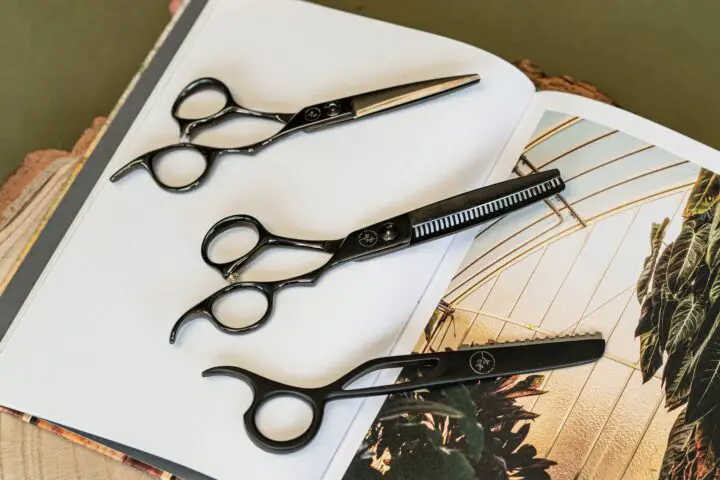
Question: What should you look for when choosing the right pair of haircutting scissors?
Answer: When choosing haircutting scissors, consider the material, blade type, and handle design. Stainless steel, particularly Japanese or German steel, is often recommended for durability and sharpness. Blade types like beveled or convex have their advantages—beveled blades are great for layered cuts, while convex blades offer precision. The handle design, whether it’s classic, offset, or crane, should offer comfort and reduce hand fatigue during long hours of work.
The Essentials of Shear Maintenance
Question: How often should you sharpen your shears and what’s the best method?
Answer: The frequency of shear sharpening depends on usage, but a general rule is to sharpen them every 500-700 haircut. The best method is to have them professionally sharpened to ensure the blades maintain their original angle and sharpness. DIY methods can often lead to uneven blades and reduced performance.
The Japanese Edge: Superior Craftsmanship in Scissors
Question: Why are Japanese scissors often considered the best for haircutting?
Answer: Japanese scissors are renowned for their exceptional craftsmanship, high-quality materials, and precision. Often made from premium Japanese stainless steel, these scissors offer a level of sharpness and durability that is hard to match. The meticulous design ensures a smooth, effortless cut, making them a favorite among professionals.
When delving into the world of professional hair-cutting tools and techniques, it’s crucial for men to complement their grooming routine with effective hair-care practices, which are covered comprehensively in the related article.
Protecting Your Investment: The Importance of a Shear Case
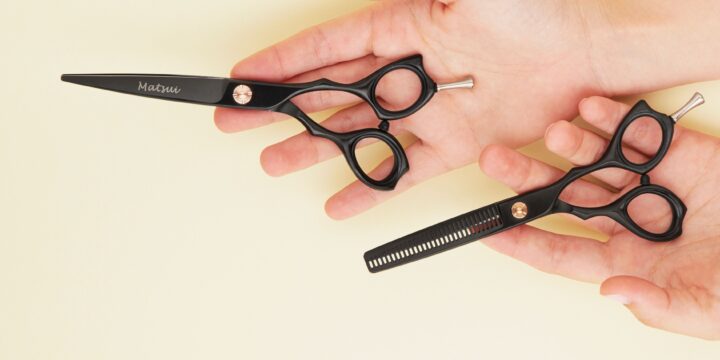
Question: Why is a shear case essential for professionals?
Answer: A shear case is crucial for protecting your investment. High-quality scissors are not cheap, and a good case will protect them from damage, moisture, and accidental nicks. It also makes it easier to carry multiple pairs and other accessories, keeping everything organized and readily accessible.
Decoding Scissor Terminology: Offset Handles
Question: What does the term “offset” refer to in the context of haircutting?
Answer: In the context of hair cutting, “offset” refers to the design of the scissor handles. One handle is shorter than the other, allowing for a more open hand position. This design reduces the strain on the thumb and wrist, making it easier to cut hair for extended periods.
If you’re seeking to master professional hair-cutting techniques, it’s essential to start with the basics, including styling for a more relaxed appearance, as explained in the related article.
Saki Shears: A Benchmark in Quality
Question: What sets Saki Shears apart from other brands in terms of quality?
Answer: Saki Shears are known for their exceptional craftsmanship and attention to detail. Made from premium materials like high-grade Japanese stainless steel, these shears offer unparalleled sharpness and durability. The brand also emphasizes ergonomic design, ensuring that hairstylists can work comfortably for extended periods. When you invest in Saki Shears, you’re not just buying a tool; you’re investing in a piece of craftsmanship that elevates your artistry.
Cosmetology Shears vs. Regular Scissors
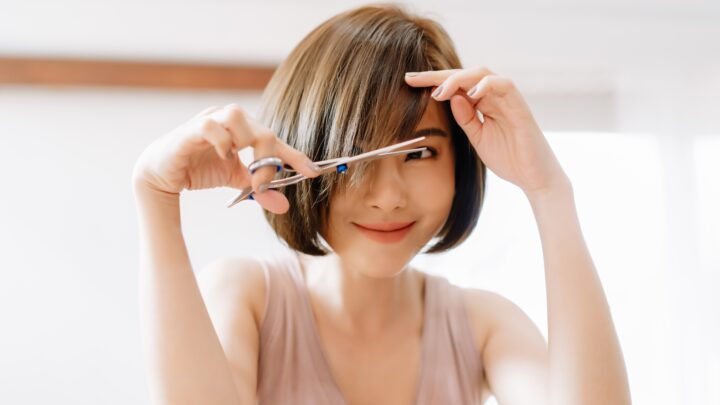
Question: How do shears in cosmetology differ from regular scissors?
Answer: Cosmetology shears are specialized tools designed for cutting hair with high precision. Unlike regular scissors, they are made from premium materials like high-grade stainless steel and feature specialized blades for different cutting techniques. They also often have ergonomic handles and other features like tension adjustments for fine-tuning your cuts.
Routine Shear Care: Oiling and Beyond
Question: Why is it important to oil your shears regularly?
Answer: Regular oiling is essential for the smooth operation and longevity of your shears. It reduces friction between the blades, making for a smoother, more precise cut. It also prevents rust and corrosion, extending the life of your investment.
How Offset Handles Transform Cutting Techniques
Question: How does an offset handle affect your cutting technique?
Answer: An offset handle allows for a more natural hand and wrist position, which can significantly affect your cutting technique. It enables you to make more precise cuts with less effort and strain, improving both the quality of your work and your comfort during long cutting sessions.
Is Investing in Expensive Scissors Worth It?
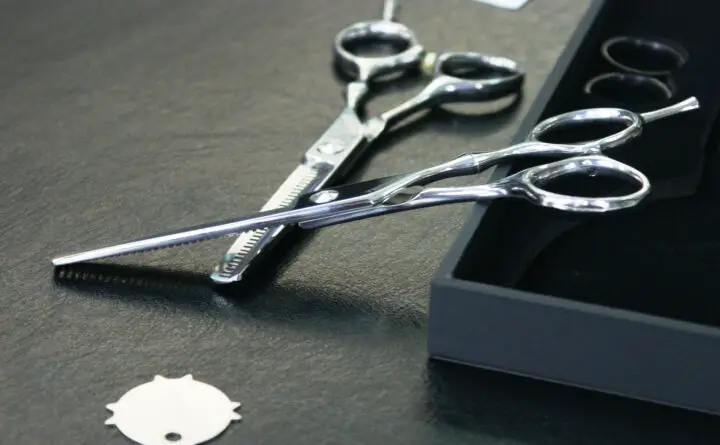
Question: Are expensive scissors worth the investment for professionals?
Answer: While the initial cost may be high, investing in a pair of high-quality, expensive scissors can pay off in the long run. They are generally made from superior materials and offer better ergonomics and sharper blades, which translates to better performance and less strain during work. Over time, this can lead to higher client satisfaction and less need for frequent replacements or repairs.
Matching Scissor Length with Cutting Techniques
Question: How does the length of the scissors affect your cutting technique?
Answer: The length of the scissors plays a significant role in your cutting technique and the types of cuts you can achieve. Longer blades, often around 6.5 to 7 inches, are ideal for cutting large sections and are often used for blunt cuts. Shorter blades, around 5 to 5.5 inches, offer more control and are excellent for detailed work like texturing or point cutting. Your choice should depend on your specific needs and the techniques you frequently use.
Delving into the realm of professional hair-cutting tools and techniques often leads to an appreciation for the evolution of haircuts throughout history, a fascinating topic covered in the linked article.
Thinning Shears: Specialized Tools for Texture and Volume
Question: What are thinning shears and when should they be used?
Answer: Thinning shears are a specialized type of hair-cutting scissors with one normal straight blade and one notched or serrated blade. They are used to remove bulk from hair, create texture, and blend layers without altering the overall length significantly. Thinning shears are especially useful for clients with thick or curly hair and are generally used after the primary cut has been established.
Maintenance Steps to Ensure the Longevity of Scissors
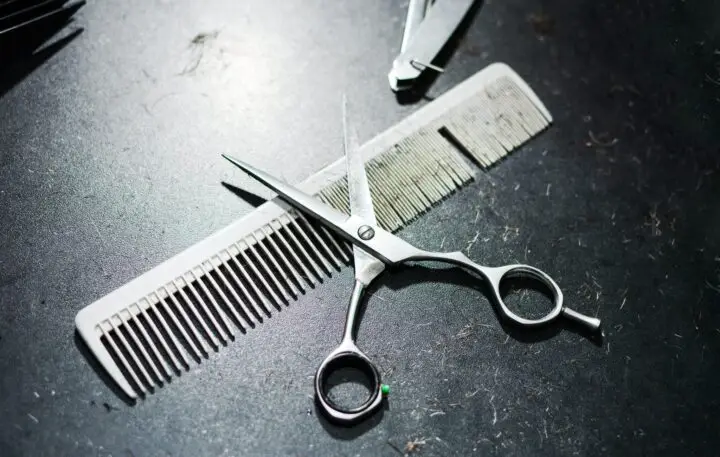
Question: Besides sharpening, what other maintenance steps are essential for keeping your scissors in top condition?
Answer: In addition to regular sharpening, it’s crucial to clean your scissors daily to remove hair and product residue. Periodic tension adjustment is also necessary to ensure that the blades are aligned correctly. Always store your scissors in a protective case to prevent accidental damage. Following these steps will not only extend the life of your scissors but also ensure consistent, high-quality cuts.
The Ergonomics of Hair Cutting Scissors
Question: How important is ergonomic design in choosing the right pair of scissors?
Answer: Ergonomic design is extremely important, especially for professionals who use scissors for extended periods. Poorly designed scissors can lead to hand fatigue, wrist strain, and even long-term issues like carpal tunnel syndrome. Look for features like offset handles, swivel thumbs, and lightweight construction to maximize comfort and minimize strain.
Conclusion
Choosing the right tools and maintaining them properly are crucial steps in building a successful career in hair cutting. Whether you’re a left-handed stylist looking for the perfect pair of scissors or a seasoned professional wondering about shear sharpening, investing in quality and knowledge will set you on the path to success.

